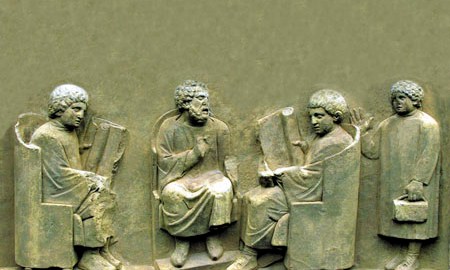Social Media is the Norm; Mass Media was the Fad

You don’t need a digital network to pass along information to a wider group. Technology simply happens to make it easier, cheaper and faster. After all, the Romans were quite adept at social media, says Tom Standage, the digital editor of the Economist and author of the book, Writing on the Wall: Social Media – The First 2,000 Years

.
Standage points out that mass media – in which information is received from “an impersonal box in the corner of your living room” like a TV or radio or is delivered to your door in the form of a newspaper – was just a passing fad in human history.
Social media, on the other hand – defined as media you get through a distributed network of people who might be physically separate but feel like they are part of a group – has ancient roots and has popped up throughout human history.
Initially, social media developed as a form of communication for the elites. “The Romans didn’t have broadband,” Standage points out, but they did have slaves who could copy documents and distribute them. Later on coffeehouses emerged in European cities in the 17th and 18th centuries where a rising class of tradespeople would gather and share information.
Instead of England going to the dogs, as some critics of coffeehouses suggested at the time, these early social media platforms were “great crucibles of innovation,” Standage says, in that they allowed people and ideas to mix in ways that they previously hadn’t.
Just as the scientific revolution and financial revolutions began in coffeehouses, we might be in for a similar period of explosive innovation as a result of advances in social media, Standage tells Jeff Schechtman in this week’s Specific Gravity interview.
Listen to the podcast here:
Click here to listen on your iphone or ipad
Image courtesy of Shutterstock





